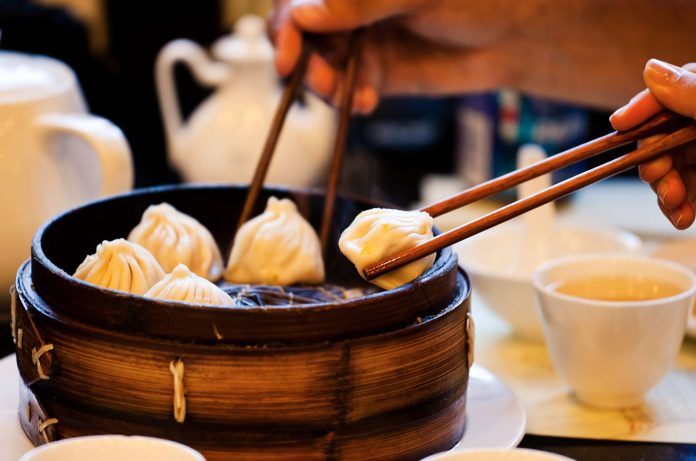China is the ancient alcohol country. Distiller’s yeast brewing appeared in Pre-Qin Period. After Han Dynasty, starter propagation was developed. Wine was introduced in the Eastern Han Dynasty. Medicinal liquor appeared in Song Dynasty. White spirit made by distillation was imported from Arab in Yuan Dynasty and Ming Dynasty. Chinese alcohol culture has a long history. Alcohol is not only used in official activities such as worship ceremony, meeting of sovereigns and celebration, but also used in civil weddings, funerals, happy reunions, arrival and departure.
Food
China is the hometown of tea. Chinese tea culture is long-standing, extensive and profound.
Chinese Cuisine
Chinese cuisine has developed for several thousand years, composed by royal palace cuisine in various dynasties, feudal official cuisine and different local cuisines. Famous styles of cuisines include: Shandong cuisine, Sichuan cuisine, Cantonese cuisine, Fujian cuisine, Jiangsu Cuisine, Zhejiang Cuisine, Hunan Cuisine, and Anhui Cuisine. Ingredients in Chinese cuisine are mostly made into the small size suitable for eating. Chopsticks are used for solid food.
China’s long history, vast territory and extensive contact with other nations and cultures have given birth to the distinctive Chinese culinary art. With several thousand years of creative and accumulative efforts, the Chinese cuisines have become increasingly popular among more and more overseas gourmets, virtually functioning as an envoy of friendship in China’s cultural exchanges with foreign countries.
Modern China enjoys a world wide reputations as the ‘kingdom of cuisine’. The exquisite Chinese culinary art, regarded indisputably as one if the world’s finest culinary traditions, has prevailed all over the world. The nearly endless variety of natural ingredients and cooking methods employed in Chinese cuisine stand out unequaled in the world, which may very well account for the universal popularity of Chinese restaurants and Chinese cuisine overseas.
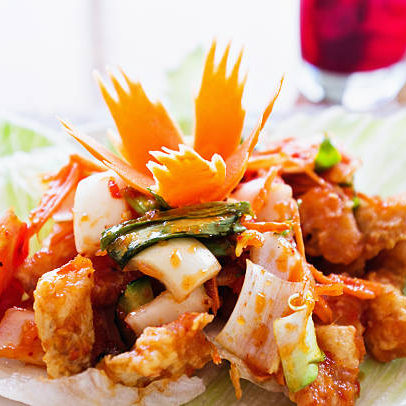
Anhui Cuisine
It comprises the specialties of Southern Anhui, Wanjiang, Hefei, Huainan and Northern Anhui. The highly distinctive characteristic of Anhui cuisine lies not only in the elaborate choices of cooking materials but also in the strict control of cooking process. Anhui cuisine is also called Anhui favor. It originates from ancient Huizhou in the Southern Song Dynasty. At first, Anhui favor comes from mountainous area in ancient Huizhou. With the rise of Anhui businessmen, Anhui cuisine gradually spread to Jiangsu province, Zhejiang province, and Jiangxi province and so on.
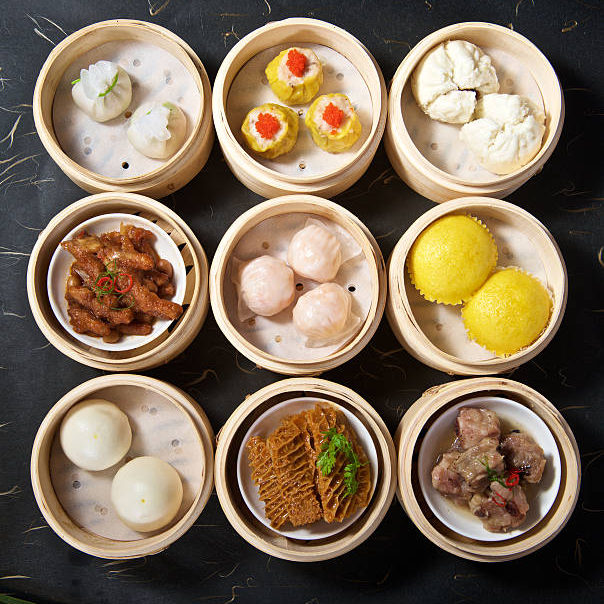
Canton Cuisine
It is the hardest to categorize, emphasizes light cooking with seemingly limitless range of ingredients. Cantonese cuisine took shape in the Ming and Qing Dynasties. In the process of its development, it has borrowed the culinary essence of northern China and of the Western-style food, while maintaining its traditional local flavor. The cooking methods of Canton cuisine are complicated and Canton cuisine is elaborate and refined. Chefs have to spend much time to prepare the materials and cook, that’s why the Canton cuisine restaurants are less than Sichuan cuisine restaurants.

Fujian Cuisine
As one of the eight main cuisines of China, Fujian cuisine was a latecomer in southeast China along the coast. It emphasizes seafood and river fishes. The Fujian coastal area produces 167 varieties of fish and 90 kinds of turtles and shellfish. It also produces edible bird’s nest, cuttlefish, and sturgeon. These special products are widely used in Fujian dishes. Economy and culture of Fujian province began to flourish after the Southern Song Dynasty. During the Qing Dynasty, Fujian cuisine gradually became famous in China. The most characteristic aspect of Fujian cuisine is that the dishes are served in soup.

Hunan Cuisine
As one of the eight major cuisines of China, Hunan cuisine is famous for its hot and spicy. People may be confused that what the difference is between Hunan cuisine and Sichuan cuisine, for the characteristics of them are hot and spicy. Sichuan cuisines are widely used chili peppers, especially prickly ash, giving it a distinctively spicy taste which leaves a slight numb sensation in the mouth, while Hunan cuisine doesn’t has. Hunan cuisine mainly originates from Dongting Lake area and western Hunan mountain area. Aquatic food and poultry are main cooking materials of Dongting Lake area cuisine, which taste salty and spicy. However, game and many kinds of meat are the main cooking materials of western Hunan mountain area cuisines, the tastes are salted fresh spicy and sour.
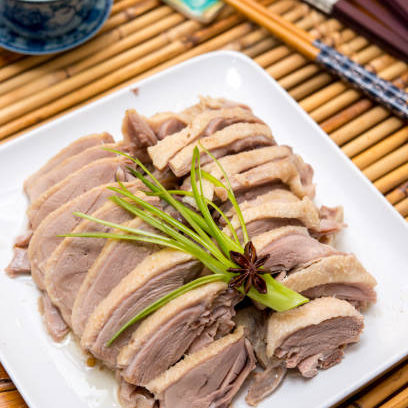
Jiangsu Cuisine
As one of the eight major cuisines of China, Jiangsu cuisine comprises of three local cooking styles of Yangzhou, Nanjing and Suzhou, all of them are in Jiangsu Province. For the Jiangsu cuisine is similar to Zhejiang cuisines, both of them are called a joint name-Jiangzhe cuisine. Jiangsu cuisine stress the original flavors of well-chosen materials, it features carefully selected ingredients. In addition, the artistic shape and bright colors of the dishes add more ornamental value. Yangzhou cuisine is essentially a combination of the best elements of northern and southern cooking.

Shandong Cuisine
Shandong province border the sea, so Shandong cuisine deeply influenced by the sea food. People in Shandong like to use seasoning and flavoring to make cuisine more delicious. As one of the eight major cuisines of China, it plays an important role in Chinese cuisines. The Shandong cuisine is made of eastern Shandong dishes, Confucius dishes and Jinan dishes. For Shandong locates in fertile plains, it’s a main wheat-growing area in China. People in Shandong even like to eat foods made of wheat flour as staple food. It’s common to see that Shandong people eat big cakes stuffed with scallions or minced meat when they eat three meals a day.

Sichuan Cuisine
Sichuan Cuisine is one of the eight major cuisines of China. The cuisine features a wide range of materials, various seasonings and different cooking techniques and numerous tastes. Statistics show that the number of Sichuan dishes has surpassed 5,000. With a rich variety of strong flavors, Sichuan food is famous for its countless delicacies, dominated by peppery, chili flavors, and best known for being spicy-hot. If you find the Sichuan dishes too bland, then you are probably not eating authentic Sichuan cuisine. Chili peppers and prickly ash are used in many dishes, giving it a distinctively spicy taste, called Ma in Chinese. It often leaves a slight numb sensation in the mouth. Thanks to the development of global trade, chili peppers were spread to Sichuan by Americans in the 18th century, which greatly influence flavor of Sichuan cuisines.
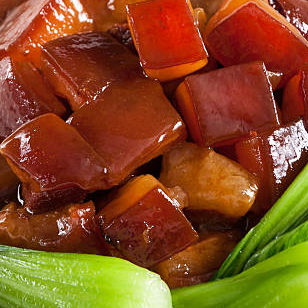
Zhejiang Cuisine
Zhejiang cuisine includes the specialties of Hangzhou, Ningbo and Shaoxing in Zhejiang Province, which is known as ‘land abundant in fish and rice’, Zhejiang cuisine, not greasy, wins its reputation for freshness, tenderness, softness, and smoothness of its dishes with mellow fragrance. Hangzhou cuisine is the most famous one among the three. Jiangsu cuisine is characterized by stirring, braising, steaming, and so on. People in Jiangsu try to make their cuisine keep the natural and original flavor of the material. They stress to make the cooking soup of dishes delicious, tasting light but not blank, strong but not greasy.
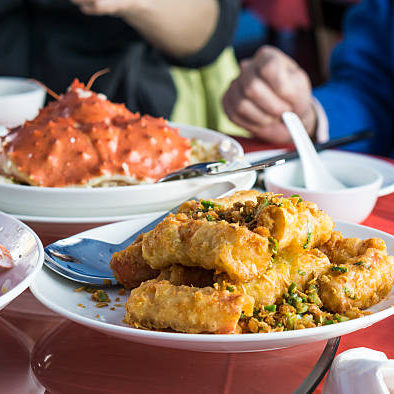
Royal Cuisine
Royal Cuisine originated from the imperial kitchens, where dishes were cooked for the royal families. It is made from selected materials and cooked with great care. In addition, the cutting skills are delicate. The dishes of royal cuisine often have beautiful names with auspicious meanings. They are excellent in color, fragrance, taste, shape, and dishware as well as dish arranging.

Vegetarian Cuisine
The Vegetarian Cuisine became popular as early as the Song Dynasty (960AD -1279AD) and developed further into three major schools in Ming and Qing Dynasties, they are temple vegetarian dishes, court vegetarian dishes and folk vegetarian dishes. Made of green vegetables, fruits, edible fungi, soybean products, and cooked in vegetable oil. The dishes are tasty, nourishing, and highly digestible. What’s more, the vegetarian cuisine can help the body resist cancer. Cooking by the various methods, some of the materials can be appeared and tasted like meat.
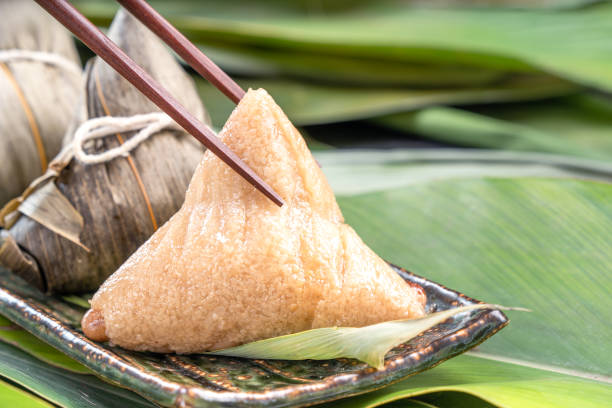
Festival Cuisine
Chinese prefer to combine gourmet food with festivals and important occasions. The most interesting part of cuisine culture lies in the feast offered on various occasions, including festivals, birthday parties, weddings, funerals. Different occasions match with different cuisines.
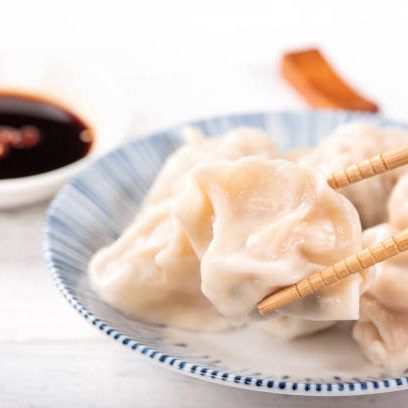
Jiao Zi (Chinese Dumplings)
Dumpling is the representative of Chinese traditional food, which is indispensable in Northen China household during the holidays. Because it is shaped like the ancient Chinese gold or silver ingots, dumpling symbolizes wealth. In the New Year’s Eve, all family members try to gather to have the reunion banquet. People may hide a coin in dumpling when they make it, and the people who find the coin will likely to make a fortune in the coming New Year.
Dumpling can be filled in various stuffing, and the most typical flavor is the chopped leek and pork. Steaming, boiling or pan-frying all is cooking methods to cook dumpling. The authentic way to eat is dipping the dumpling to some seasoning.
On the other hand, dumpling can be a fast food with good nutrition. You don’t need to cook other dishes when you plan to eat dumpling on big occasions. It already has the rich content inside! Today, people will find different kinds of deep-frozen dumplings in supermarket.
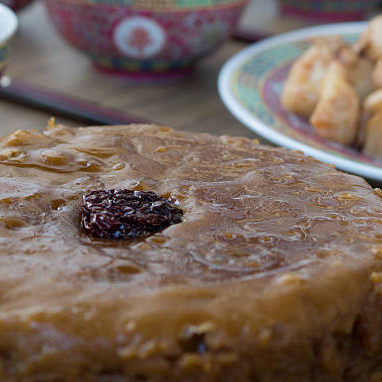
Nian Gao (New Year Cake)
Niangao is an indispensible food in Chinese New Year for the meaning of thriving in the New Year. It’s a kind of Chinese cake, made by sticky rice flour and brown sugar, or meat and spring onion. It is Southerners’ favorite New Year food. The shape is round. In Chinese, ‘Gao’ has the same pronunciation with the word meaning ‘High’, and ‘Nian’ means year. So ‘Nian Gao’ is a symbolization for gaining improvement in life year by year. What’s more, the round shape means family reunion.

Zong Zi
Zongzi is a traditional food of Dragon Boat Festival. Generally speaking, Zongzi is made of sticky rice with different fillings and wrapped in bamboo or reed leaves. Different regions of China have their own flavors of Zongzi. For example, in Southern China, you will find fat pork soaked in soy sauce or bean paste in the middle of the sticky rice. While Zongzi in northern China often uses dry dates as filling, and there is also a kind of Zongzi without any fillings. The most common shape of Zongzi is pyramidal or triangular.
Making Zongzi can be challengeable. People should make the bamboo or reed leaves into a funnel shape and place the rice inside, and then use the straw or thread fasten it.
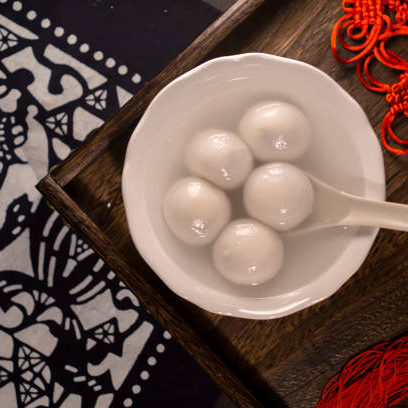
Tangyuan
Tangyuan is a typical food in Chinese Lantern Festival. It’s a kind of dumplings in China. The fillings inside the tangyuan are various. Sesame is the most common filling. There is a slight difference between northern China and southern China. The filling is salty in northern China, while that is sweet in southern China.
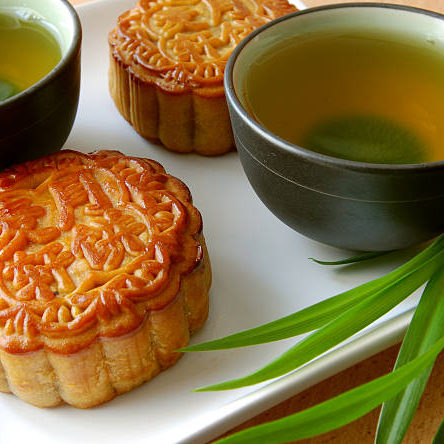
Moon cake
Moon cake is the most popular food in Mid-autumn Festival. It is a kind of cookie with fillings of lotus seed, the yolk of preserved eggs, apricot kernel, olive kernel, green pea, sesame, dry mushroom, shrimp, tangerine peel, lemon leaves, and so on, which can mainly be classify.

Chinese Tea
With a profound history of over 4,000 years, Chinese tea is regarded as an exquisite art form. Now it has become the national drink and one of the three most popular drinks in the world, the others are coffee and cocoa).
Everything from planting tea, to processing and drinking originated in China – along with the famous tea ceremony. Known as the Hometown of Tea, the land can be divided into four growing regions: South China, Southwestern China, and Yangtze River’s north and south banks.
These vast planting areas grow various types of tea trees, and each flavor of tea requires its own specific tea sets, including tea cups, pots, and saucers. The materials used differ from each region and include porcelain, pottery, lacquer ware, glass, bamboo, and wooden fish stone. The popular tea ceremony is considered to help cultivate the minds of those who partake. Through infusing, appreciating, and tasting tea, people nourish their inborn nature and while growing their relationships with one another.
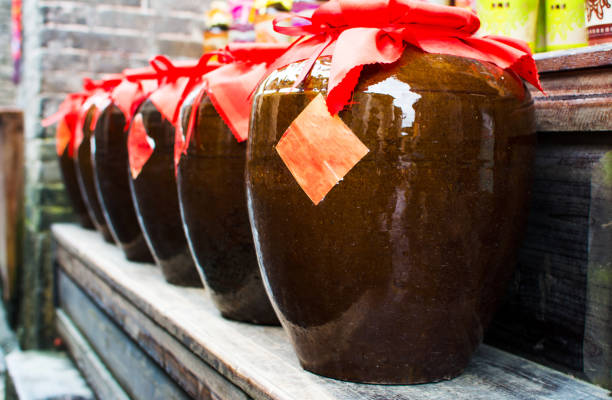
Chinese Alcohol
Alcohol may be featured at sumptuous banquets to encourage the expression of diners’ thoughts and feelings. Throughout Chinese history, alcohol is not only an objective existence but also a cultural symbol. China was one of the earliest countries in the world to make alcohol and its history can be traced back to prehistoric times.
Alcohol is more than a drink in China; it is endowed with spiritual and cultural value. It touches every aspect of life – including literature, aesthetic ideals, and society itself. From this point of view, drinking alcohol allows one to actually to taste a culture.
According to the historical records, as early as in the Shang Dynasty (16th – 11th century BC), Chinese people began to drink alcohol and use it to worship Gods. All types of alcohol, except yellow rice wine, developed greatly after the Han (206 -220 BC) and Tang (618-907 BC) dynasties.
Chinese alcohols can be divided into yellow rice wine, white wine, medicinal liquor, fruit liquor, and beer. By the alcoholic content, they can be grouped into strong alcohol liquor, medium alcohol liquor, and low alcohol liquor. In recent years, the Chinese winemaking industry has grown and prospered.
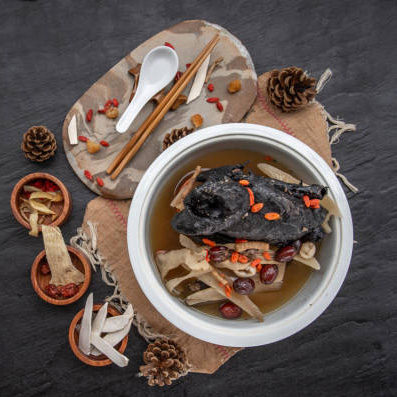
Medical Cuisine
The cuisine is an important and characteristic part of Chinese cuisine. The cuisine mainly is soup boiled with many Chinese medicines for several hours. The chefs have developed many food therapies by combining cookery and traditional Chinese medicine. Medicines cuisines are not only tasty but also good for health.





